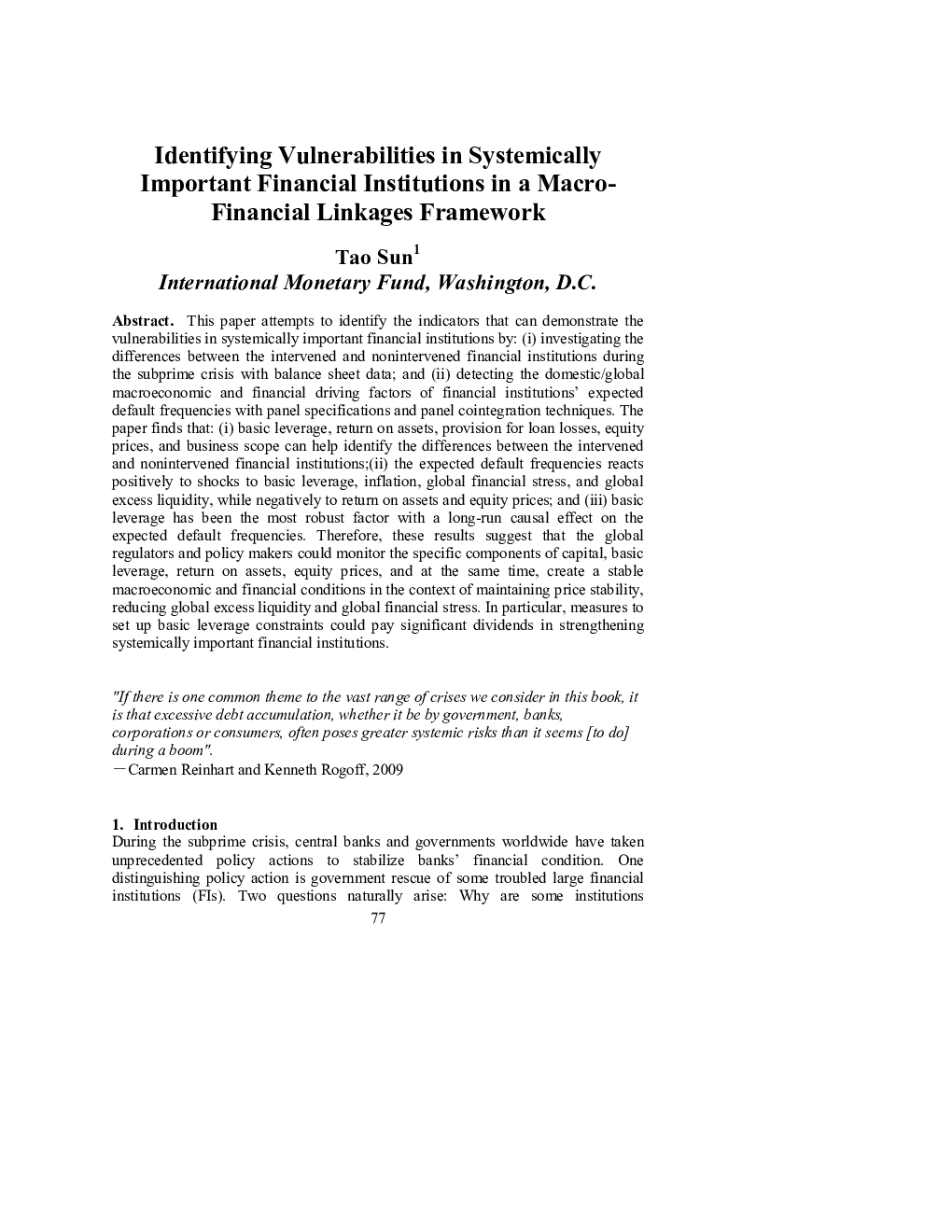| Article ID | Journal | Published Year | Pages | File Type |
|---|---|---|---|---|
| 5097908 | The Journal of Economic Asymmetries | 2010 | 27 Pages |
Abstract
This paper attempts to identify the indicators that can demonstrate the vulnerabilities in systemically important financial institutions by: (i) investigating the differences between the intervened and nonintervened financial institutions during the subprime crisis with balance sheet data; and (ii) detecting the domestic/global macroeconomic and financial driving factors of financial institutions' expected default frequencies with panel specifications and panel cointegration techniques. The paper finds that: (i) basic leverage, return on assets, provision for loan losses, equity prices, and business scope can help identify the differences between the intervened and nonintervened financial institutions;(ii) the expected default frequencies reacts positively to shocks to basic leverage, inflation, global financial stress, and global excess liquidity, while negatively to return on assets and equity prices; and (iii) basic leverage has been the most robust factor with a long-run causal effect on the expected default frequencies. Therefore, these results suggest that the global regulators and policy makers could monitor the specific components of capital, basic leverage, return on assets, equity prices, and at the same time, create a stable macroeconomic and financial conditions in the context of maintaining price stability, reducing global excess liquidity and global financial stress. In particular, measures to set up basic leverage constraints could pay significant dividends in strengthening systemically important financial institutions.
Related Topics
Social Sciences and Humanities
Economics, Econometrics and Finance
Economics and Econometrics
Authors
Tao Sun,
